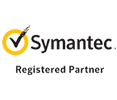
What-is-the-internet-of-things
What Is the Internet of Things (or IoT)?: A Beginner’s Crash Course
Posted on May 8, 2018 in Uncategorized
If you are not employed in the tech industry, you have likely assumed the term “IoT” to be just another hot buzz word. While the Internet of Things (IoT) is an innovative concept in the field, you do not have to be a tech aficionado to understand, or use, the technology involved. In fact, chances are that you’re already using the IoT in your everyday life. Recent statistics show that there were 3.9 billion IoT-connected devices in use during 2016 alone.
What Is the Internet of Things?
Simply put, the Internet of Things is a system of connected physical devices that collect and share data with one another. While this may sound intimidating, it is much less complex than it may seem. Most devices equipped with a “smart” title qualify as IoT devices if they are capable of communicating with other devices. They may be in the form of a thermostat, light bulb, refrigerator, security system, watch or even a car.
The Difference Between Computers and IoT Devices
These devices are not programmed and operated like traditional computers, tablets or smartphones. This is because they do not require regular human interaction to perform tasks. Through the utilization of embedded sensors and technologies like Bluetooth, GPS, WiFi or Artificial Intelligence, these devices operate intuitively. They gather and exchange information using their own specialized device-to-device communication modules, thus creating the Internet of Things.
Examples of IoT Device Functionality
One good example of IOT device functionality is that of a smart thermostat, which uses a number of tools to learn a user’s preferences. If a homeowner typically lowers the temperature in their home before bedtime, the thermostat will predict this on its own, and no further action will be required on behalf of the homeowner. In the event that the temperature becomes too low or too high, the thermostat is capable of communicating this concern with the homeowner via a mobile app or email notification.
Another prime example is smart lighting. Several different smart bulbs can be connected to a singular home automation hub. These lighting systems often contain motion sensors or other automated systems, which trigger the hub to communicate with smart bulbs in relevant areas of the home. The hub can communicate with bulbs in the living room, for instance, and direct them to turn on upon a homeowner’s arrival. Similarly, when no motion is detected, the devices will communicate through the IoT to ensure that unnecessary lighting is powered down.
The Current Role and Future of the IoT
Currently associated with the convenience and energy-saving capabilities of home automation, the technology is a relatively new notion. Though it is purported to have been “born” between 2008 and 2009, the focus on expanding and improving it has only been mainstream in the industry for a few short years. Shockingly, it is already transforming the way that users live their daily lives, and experts predict that this is only the beginning.
Certainly there is much more to the IoT than meets the eye of everyday consumers. Experts in the IoT space work diligently on intricate setups, user-friendly platforms and advanced hardware to make the IoT possible and functional. With no shortage of applications for the technology, it is estimated that there will be a staggering 21 billion IoT-connected devices by the year 2020. Fortunately, with a general understanding of the interconnected workings of the IoT, even those with limited technological knowledge can understand the excitement and hype surrounding the future of the Internet of Things.











